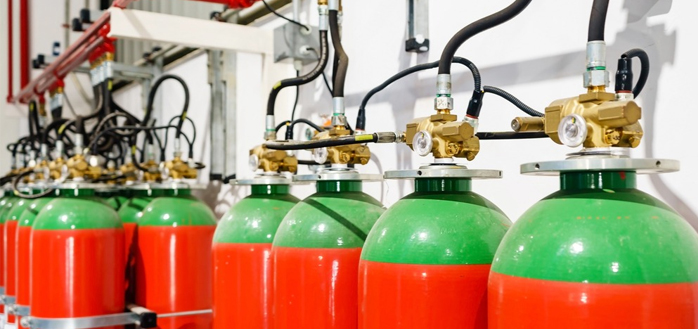Fire Suppression Systems
- Home
- Fire Suppression Systems

Fire Suppression Systems
Fire suppression systems are crucial components of fire safety infrastructure, designed to detect and extinguish fires automatically or manually. These systems are essential for protecting lives, property, and the environment in various settings, including commercial, industrial buildings.
- Sprinkler Systems : Sprinkler systems are the most common type of fire suppression system. They consist of a network of pipes with sprinkler heads strategically placed throughout a building. When the heat from a fire activates a sprinkler head, it releases water to extinguish or control the fire.
- Gaseous Systems : These systems use inert gases or chemical agents to suppress fires by reducing the oxygen concentration or interfering with the chemical reaction. Common agents include carbon dioxide (CO2), halon, FM-200, and inert gases like nitrogen and argon.
- Foam Systems : Foam suppression systems discharge a mixture of foam concentrate and water to smother fires, suppress vapors, and cool surfaces. They are often used in areas with flammable liquids or combustible materials.
- Clean Agent Systems : These systems use clean agents, such as FM-200 or Novec 1230, which are electrically non-conductive, non-corrosive, and leave no residue after discharge. They are suitable for protecting sensitive electronic equipment and valuable assets.
- Water Mist Systems : Water mist systems disperse fine water droplets to cool the fire and displace oxygen, suppressing combustion. They are effective in areas where traditional sprinkler systems may not be suitable, such as sensitive equipment rooms or heritage buildings.
